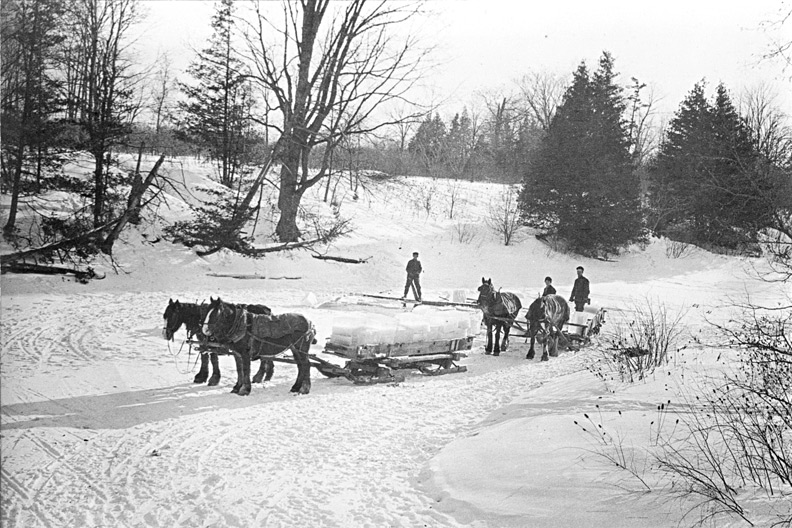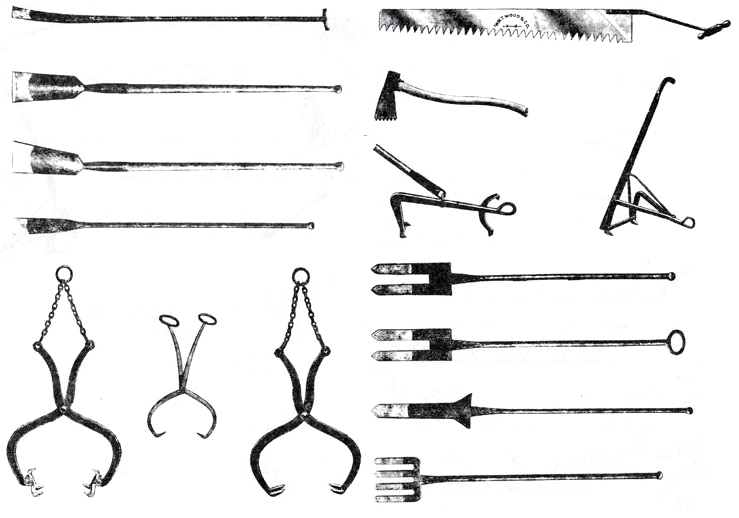Although the ice trade still exists today, its heyday was during the 19th century ice harvesting which was commonly referred to as the “frozen water trade”. While snow and ice had been collected and stored for use in summer for as long as anyone could remember, it wasn’t until a 25-year-old Boston entrepreneur, Frederic Tudor, set about to commercialize the harvesting of ice that it became a booming business. However, Tudor’s first harvest that he attempted to sell didn’t go over so well. He sent a ship full of ice to sail and sell in the West Indies in 1806. Upon the ship’s arrival though no one was interested in the product as people just didn’t understand the benefit of everyday use of ice!
Prior to this ice was only available to the wealthy who had the means to afford their own ice houses. It was not a product that had mass appeal as it does today. For the most part the storage and preservation of food was not reliant upon ice. People just didn’t understand the concept of cooling down a drink with ice. Physicians didn’t understand how ice could reduce fevers either. People simply didn’t know that they needed ice. While the use of ice houses, a building insulated allowing for the storage of ice into the summer, was commonplace in wealthier households as early as 1660 in England, the everyday use of ice simply did not exist. In addition, ice harvesting was a dangerous business.
So in order for the frozen water trade to become successful, Tudor had to convince people that they needed ice. He took it upon himself to go about the country convincing bartenders to sell chilled drinks and taught restaurants how to make ice cream. It wasn’t long before people fell in love with the idea of a cooled drink. By 1821 Tudor had created a real market for ice in several cities. Now that Tudor had created a market, he set about to develop tools to ease the harvesting of ice. It was in1826 that Tudor’s foreman, Nathanial Wyett, came up with the idea of using horses to plough cut the ice. [1] For in truth frozen ice became a field in need of harvesting.
Ice harvesting commenced when a foot of ice was on the river or lake. This typically occurred in January through March in the New England area and in December through February in Norway, two major geographical areas of ice harvesting. A crop that was dependent upon nature to freeze the field. And just like any other harvest–the field had to be cultivated in order for it to yield. Once the water started to freeze it was essential to keep it clear of snow as the snow would slow the ice from freezing at a deeper depth. So the field was cleared of weeds just like any other field. Only the weed that needed to be cleared from the field was snow.
Once the field was ready for harvesting it was then cut or ploughed into long rows and then once again cut across the rows to create the blocks. Interestingly it was often off-season farmers who worked at the harvesting of winter. The harvesters came and cut along the ploughed lines in order to release the ice from the field. Ice was pulled from the river or pond with ice tongs and sent off in wagons to be stored in ice houses. The ice harvesters wore special corked shoes and the horses had spiked horse shoes allowing them to work on the ice.
As with all crops, weather can have a positive or negative impact on the harvest. Mild winters, referred to as “open winters”, impacted the ice harvest as it was essential for the ice to be 18″ thick in order for the horses and men to work safely on the ice. Unseasonably mild winters resulted in ice famines, of which 1880 and 1890 being the most extreme. These ice famines led to the development of commercially produced ice. Ice harvesting eventually disappeared for the most part in the early 20th century as it then no longer was considered primarily a winter harvest.
At the peak of its production at the end of the 19th century, “the U.S. ice trade employed an estimated 90,000 people in an industry capitalised at $28 million ($660 million in 2010 terms), using ice houses capable of storing up to 250,000 tons each” [2]
Click this link to watch a fascinating and historic way of ice harvesting — Ice Harvest Film circa 1919
Until we meet again, may God hold you in the palm of His hand.
~An Old Irish Blessing
Marian (McCoy) Boveri
[1] http://mentalfloss.com/article/22407/surprisingly-cool-history-ice






































































Let’s Connect
Facebook
Twitter
Google +1
LinkedIn